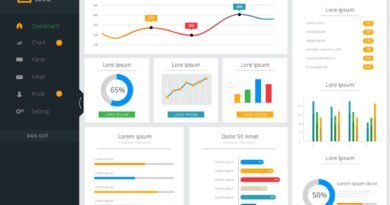How to Improve Shift Management in 2021
The global pandemic has introduced a lot of changes in terms of work. Many people started working shifts again instead of the usual 9 to 5, whereas others started working remotely, for the most part. These changes were not only necessary, but they proved to be useful in both stopping the spread of the virus and also in increasing employee productivity, especially remote work.
Now that the infamous 2020 is behind us, things are starting to go back to normal. However, we are not out of the woods yet, and 2021 will be the year where companies adapt to the changes they were forced to adopt the year before.
This is especially true when it comes to shift management. Even without the pandemic raging on, managing shifts can be a daunting task, and mistakes are costly. The more employees your company has, the more difficult it becomes to manage their shifts effectively. With that in mind, here’s how to improve shift management in 2021.
Plan shifts well ahead

The most important thing about shift management is to be proactive. In other words, plan your employee shifts well in advance. Most managers plan shifts only a few days in advance, which can cause confusion and frustration among employees.
You have to plan at least two or three weeks in advance. Sure, this may sound like an impossible thing to do, but in reality, your employees can help you solve this problem with ease. The key is to ask employees for shift preferences.
That way, you can take preferences into account and avoid absences because employees will have time to prepare for the upcoming shifts. Spending time to plan shifts ahead now will save you time later, and even if you need to change something, you can change it easily instead of making last-minute alterations.
Utilize remote work

Since the pandemic isn’t over yet, proper precautions at the workplace are still necessary and even mandatory. The best practice for mantling these precautions turned out to be remote work. Moreover, it also turned out that the majority of employees quite enjoy working from home.
Therefore, you should consider sending as many employees as you can spare to work remotely. You can even create shifts for remote work so that you can properly rotate employees.
Remote work not only suits employees but it allows you to have fewer people at the office or factory at any given moment, which reduces the chances of spreading the infection should it turn out that someone got sick. In addition, remote workers can fill in the gaps between shifts so that you can ensure that two shifts don’t meet and interact in one place.
Ditch paper and spreadsheets
As mentioned before, the more employees you have, the more difficult it becomes to manage their shifts. Add pandemic to the equation and things can get quite chaotic, very fast. This is why paper and spreadsheets for scheduling shifts are making way for handy rostering software that can do a lot of heavy lifting.
Such solutions can be of great help to managers or anyone who plans employee shifts. Not only will you reduce errors with the help of software, but you’ll also save time and money in the process. No matter how many employees you have, you’ll be able to manage shifts efficiently and seamlessly.
Introduce flexibility
Flexibility is of vital importance to both you and your employees. When you plan shifts in advance and introduce flexibility at the same time, you can allow employees to self-organize and switch shifts between themselves. This will allow you to plan shifts accordingly, and you won’t have to experience too many changes while doing so.
Moreover, more flexible work hours allow you to help employees achieve work-life balance, especially in these trying times. This will not only make them more productive, but they will appreciate your company more, which reduces the chances of turnovers.
Another benefit of flexibility, especially when it comes to working hours, is that people will come in late or leave early, which allows you to clean and disinfect their work areas effectively. You can never be too careful when such a dangerous virus is out there, and every detail that can prevent the spread of the infection has to be taken into account when planning and managing employee shifts.
Managing employee shifts in 2021 isn’t going to be easy. Even though we can finally see the end of this pandemic on the horizon, there’s still a long way to go before we actually go back to normal once again. That’s why planning shifts is more complicated than ever before, and that’s also why good management is essential.





